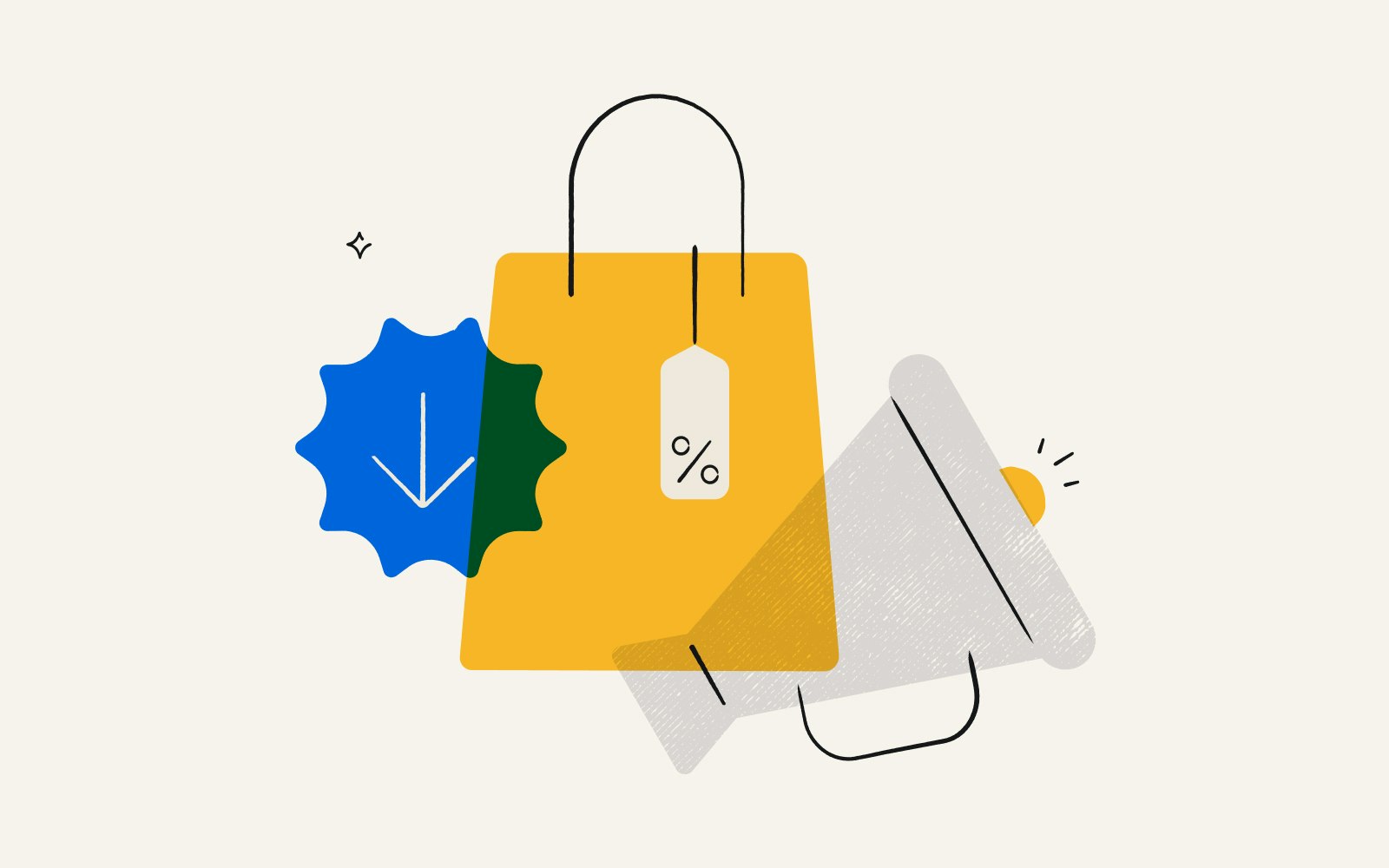Cashback promotions: complete guide to strategy, ROI & best practices
By Andrew Littlefield●6 min. read●Aug 12, 2025

Consumers widely recognize cashback rewards from credit cards, yet retailers and ecommerce businesses often overlook the opportunity to offer cashback incentives themselves. There are levels of friction that can make this strategy a bit tricky to implement, particularly for smaller shops, and many often fall back to discounts instead.
But don’t overlook cashback campaigns. With some strategy and planning, they can be a powerful tool in your marketing strategy.
Cashback sales promotions don’t have to be the exclusive domain of car dealerships or credit cards — even small ecommerce shops can get in on the action by applying best practices and careful planning.
Why you should include cashback promotions in your incentive playbook
Cash-back isn’t only a price-cut alternative; used well, it can lower your customer acquisition cost and lift repeat sales. Depending on your implementation, cashback promotions can become an incentive to return to your store again and again.
In fact, 85% of U.S. consumers cite cash-back among their top five loyalty benefits, according to a study from Boston Consulting Group. That’s far too big of a segment to ignore!
But what exactly is a cashback promotion, and how does it differ from say rebates, discounts, and other pricing strategies?
What is a cashback promotion?
A cashback incentive is a type of promotion where customers receive a portion of their purchase amount back after completing a transaction.
Unlike a traditional discount that lowers the price upfront, cashback rewards are typically given after the sale and encourage customers to pay full price initially. This could take the form of:
Store credit or instant wallet credit: Stored value that can be redeemed on future purchases from your shop
Giftcards: Either for your shop or other related brands
Direct cashback: It’s hard to beat cold hard cash placed directly in your hands!
Mail-in rebates: A check returning some of the sale price when a consumer mails in proof-of-purchase.
This approach helps preserve a brand’s perceived value, offers more flexibility in managing margins, and motivates repeat purchases by providing future spending incentives.
It’s important to note that cashback incentives differ greatly from pure discounts, as customers are still paying the full-price of an item or service up front.
3 reasons why marketing teams should use cashback promotions
Why use cashback campaigns? Here’s three big benefits for marketers:
Retain brand value: Marketers are often nervous about offering discounts as they can hurt the perceived value of your brand, particularly for higher end retailers. Cashback incentives offer a money saving lure for customers while maintaining your pricing integrity.
Incentive repeat purchases: By offering cashback incentives in the form of a store credit or gift card, you’re offering customers a powerful hook to return and spend more money.
Control: Cashback promotions offer greater margin flexibility by allowing you to cap or tier rewards, which helps you control cost per acquisition.
Use Cases for Cashback Offer Campaigns
While cashback promotions work across many marketing scenarios, they're particularly powerful for overcoming specific conversion barriers. Here are three high-impact use cases for cashback incentives:
Cart abandonment recovery: Re-engage shoppers who left items in their cart with a targeted cashback offer instead of a discount code. This approach maintains your pricing integrity while giving hesitant buyers a reason to complete their purchase.
Post-trial SaaS monetization: Convert free trial users to paid subscribers by offering cashback on their first paid month or annual subscription. This reduces the psychological barrier of moving from free to paid while providing immediate value that offsets subscription costs.
High-AOV purchase incentives: Encourage customers to reach higher order thresholds by offering tiered cashback rewards. For instance: $10 back on $75+, $25 back on $150+, or $50 back on $250+ purchases.
Mistakes to avoid in cashback promotions
Cashback promotions are a bit more complicated than simply slashing prices, so they’ll require some care planning to execute properly. Be on the lookout for the following mistakes.
Over-redemption shock & hedging
Offering cashback is a great way to boost demand for your product or service. But how much extra demand can you actually handle?
It’s wise to hedge your cashback promotion to avoid being on the hook for unlimited redemptions that could strain your balance sheet or leave you out of stock for weeks. Be sure to include clear terms in your promotion rules outlining how many redemptions are available and when they apply.
Promo-stacking abuse / reseller arbitrage
There will always be a few bad actors looking to game the system. Some customers might stack multiple promos, buy large quantities to maximize cashback, and then resell the products at full price.
To prevent this, use a promotion management system that lets you limit cashback payouts to one per customer. A robust system makes it much easier to enforce these rules and protect your margins.
Velocity caps for high-volume SKUs
For popular products, cashback promos can cause sales to spike quickly. Implementing a velocity cap limits how many cashback-eligible units can be sold (or how much cashback can be claimed) within a certain time frame or per customer.
This helps prevent runaway redemption costs and stockouts, and protects your margin on top-selling SKUs.
Instant cashback vs. MAP enforcement
Offering instant cashback can unintentionally undermine Minimum Advertised Price (MAP) policies, which brands use to prevent retailers from advertising products below a certain price to maintain brand value.
Because instant cashback effectively lowers the visible price, it can lead to MAP violations, harming relationships with distributors and other sellers.
Cross-border FX slippage on payouts
If you run a cashback promotion internationally, you may need to pay rewards in different currencies.
Fluctuating foreign exchange rates between when you set aside funds and when you actually pay out can lead to unexpected (and often unpredictable) costs.
This can eat into your promo budget and complicate financial planning, so it’s good to hedge or set conservative FX rates to manage it.
Building your cashback campaign
Every strong marketing campaign starts with clear success metrics. These benchmarks help you measure performance, prove ROI, and guide decisions about scaling or repeating your strategy.
To effectively measure your cashback campaign's impact, track these key metrics:
Week-over-week sales lift
New customers acquired
Repeat purchase rate or customer retention
Average order value (AOV) changes
Redemption or claim rate on the cashback offer
Cost per acquisition (CPA) compared to baseline
Incremental revenue or profit generated
Redemption & breakage calculator
When you offer cashback, not every customer will redeem it. A Redemption & Breakage Calculator helps you estimate:
How many customers will likely redeem
How much the program will really cost you after accounting for breakage
What your net liability is (what you actually owe in rewards)
How this affects cash flow and margins
For example, say you budget $100,000 for a cashback program. If you expect a 60% redemption rate, you can forecast that about $60,000 will actually be paid out, and $40,000 will be "breakage" (unclaimed rewards), which you keep.
Payout rails & speed matrix
For those unfamiliar, payout rails refers to the method used to deliver you cashback payment (like a gift card, store credit, Venmo, etc). Speed matrix refers to how quickly these payments process — Venmo can be instant, but an ACH transfer will take several days.
A payout rails and speed matrix helps you:
Choose which payout methods to offer
Set clear expectations for customers on when they'll receive their rewards
Optimize for customer satisfaction and operational efficiency
Avoid support headaches from customers wondering “where’s my cashback?”
Compliance & tax checklist
When running cashback promotions, you can’t ignore compliance and tax obligations. Depending on your payout amounts and regions, you may be required to report rewards as taxable income to recipients and file certain forms (for example, 1099s in the U.S.). This is particularly relevant for B2B cashback incentives that may come with larger contract sizes and therefore higher rewards.
Make sure you consult with legal and tax teams to understand local and international requirements. Outline what documentation you'll collect, what reporting thresholds apply, and how you'll notify customers. Keeping a thorough checklist helps protect your business from fines or legal issues down the road.
Fraud controls and identity verification
Cashback promotions can attract fraudsters looking to exploit loopholes. It’s not uncommon for bad actors to attempt to profit by taking advantage of poor planning by retailers, by creating fake accounts or using stolen payment methods.
To safeguard your program, implement strong fraud controls. These can include identity verification steps (such as email, phone, or government ID checks), velocity limits (like one redemption per customer), and automated fraud detection tools.
A solid verification and monitoring process not only protects your margins but also builds trust with legitimate customers.
How to market & manage your cashback promotion
Ready to give cashback campaigns a shot? Don’t forget your marketing fundamentals.
Make the offer impossible to miss
Highlight your cashback promo across all key channels: website banners, checkout pop-ups, email blasts, SMS, and paid ads. Clearly state what the customer gets, how to qualify, and when they’ll receive their reward.
Keep the messaging simple and specific
Avoid fine print confusion. Use direct language like “Get $20 back when you spend $100.” Outline any conditions upfront (e.g., minimum spend, eligible products).
Create urgency
Add an expiration date or limited budget to drive quick action. Countdown timers and “while supplies last” messages can help nudge fence-sitters.
Follow up and reinforce
After the promo, remind customers to use their rewards, thank them, and encourage a next purchase. Consider including a personalized offer to keep momentum going.
Key Takeaways
Cashback promotions can help you boost revenue and encourage repeat purchases without undermining your brand value like discounts sometimes do.
Unlike discounts, cashback preserves full-price perception and offers margin flexibility through capping or tiering rewards.
Strong planning is critical: define clear success metrics, estimate redemption and breakage carefully, and select payout methods that balance speed, cost, and customer experience.
Protect your program with robust fraud controls, compliance checks, and clear terms to avoid over-redemption, abuse, or tax headaches.
Marketing is just as important as mechanics: keep your messaging simple, create urgency, and reinforce post-purchase to maximize ROI and customer loyalty.


